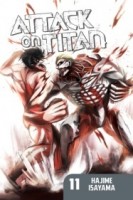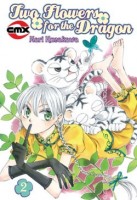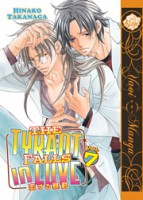My News and Reviews
Not one, but two in-depth manga reviews were posted last week at Experiments in Manga. It wasn’t intentional on my part, though it did make me happy, but both manga deal with queer themes. The first review was for Takako Shimura’s Wandering Son, Volume 6. Even though it can be a somewhat difficult read for me personally since the subject matter often hits very close to home, I’m still absolutely loving this series. The seventh volume of Wandering Son is currently scheduled for release in August, which feels like a long ways off right now. As part of my “Year of Yuri” review project, last week I also took a closer look at Kiriko Nananan’s Blue, the only example of her long-form manga available in English. It’s a sweet and melancholic story of first love which follows the relationship of two young women who are classmates at an all-girls high school. The artwork in particular is very striking.
I’ve come across plenty of interesting reading and news over the last week. Brigid Alverson attended the Angoulême International Comics Festival this year and has been writing several reports on the experience. One of those explores the current state of the French manga market. In other festival news, The Guys with Pencils podcast interviewed Christ Butcher to talk about the fantastic Toronto Comics Arts Festival which he co-founded in 2003. Justin Stroman recently wrote two articles that I found to be particularly interesting: The Great Tumblr Industry Experience for Organization Anti-Social Geniuses and The Legal Manga Reading Sites You Don’t Know About for Manga Bookshelf. Finally, there has been some more movement on the licensing front. Yen press announced three new manga titles (Übel Blatt by Etorouji Shiono, Barakamon by Satsuki Yoshino, and Hiroyuki Aigamo’s adaptation of Accel World), as did Vertical (Gamon Sakurai’s Demi-Human, Ryū Mizunagi’s Witchcraft Works, and Midori Motohashi’s adaptation of The Garden of Words).
Quick Takes
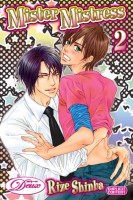 Mister Mistress, Volume 2 by Rize Shinba. It’s been quite a while since I read the first volume of Mister Mistress, but I did enjoy it enough that I made a point to track down the now out-of-print second volume. (Happily, both volumes are now available digitally from SuBLime, though I don’t believe there are currently any plans to continue the series.) Mister Mistress works best for me when it sticks to being a comedy. Shinba introduces a somewhat tragic backstory for Rei in this volume, but fortunately it doesn’t take too long for this to be turned around and played for laughs. The series’ strength really isn’t its plot, but its humor. Fujimaru is a bit of a goofball who can’t quite decide what to do about Rei. He halfheartedly attempts to exorcise the incubus several times, but on occasion he actually appreciates having him around. Though I’m not entirely convinced by their developing feelings for each other, it can be rather convenient for a horny teenager to have a personal incubus to aid in the realization of his sexual daydreams. As such, the sex scenes in Mister Mistress tend to be a little unusual.
Mister Mistress, Volume 2 by Rize Shinba. It’s been quite a while since I read the first volume of Mister Mistress, but I did enjoy it enough that I made a point to track down the now out-of-print second volume. (Happily, both volumes are now available digitally from SuBLime, though I don’t believe there are currently any plans to continue the series.) Mister Mistress works best for me when it sticks to being a comedy. Shinba introduces a somewhat tragic backstory for Rei in this volume, but fortunately it doesn’t take too long for this to be turned around and played for laughs. The series’ strength really isn’t its plot, but its humor. Fujimaru is a bit of a goofball who can’t quite decide what to do about Rei. He halfheartedly attempts to exorcise the incubus several times, but on occasion he actually appreciates having him around. Though I’m not entirely convinced by their developing feelings for each other, it can be rather convenient for a horny teenager to have a personal incubus to aid in the realization of his sexual daydreams. As such, the sex scenes in Mister Mistress tend to be a little unusual.
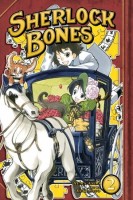 Sherlock Bones, Volumes 2-3 written by Yuma Ando and illustrated by Yuki Sato. I wasn’t sure after reading the first volume of Sherlock Bones, but after reading the second and third volumes it appears as though the series will be mostly episodic. Which is just fine and works pretty well. After the basic premise of the series has been established–Sherlock Holmes reincarnated as a mix-breed puppy–the mysteries tend to be fairly self-contained. I was pleasantly surprised by the first volume of Sherlock Bones and, if anything, I think these two volumes are even better than the first. Sherdog seems to always be present when a murder is taking place, so Sherlock Bones isn’t really a “whodunit.” Instead, the series focuses on outwitting the criminals and finding ways to reveal their attempts to cover up what they have done. For the most part this means relying on circumstantial evidence and pressuring the killers into confessing. Although murder seems to be the crime du jour, Sherlock Bones features some more lighthearted and silly investigations as well which take advantage of the fact that Sherdog is adorable.
Sherlock Bones, Volumes 2-3 written by Yuma Ando and illustrated by Yuki Sato. I wasn’t sure after reading the first volume of Sherlock Bones, but after reading the second and third volumes it appears as though the series will be mostly episodic. Which is just fine and works pretty well. After the basic premise of the series has been established–Sherlock Holmes reincarnated as a mix-breed puppy–the mysteries tend to be fairly self-contained. I was pleasantly surprised by the first volume of Sherlock Bones and, if anything, I think these two volumes are even better than the first. Sherdog seems to always be present when a murder is taking place, so Sherlock Bones isn’t really a “whodunit.” Instead, the series focuses on outwitting the criminals and finding ways to reveal their attempts to cover up what they have done. For the most part this means relying on circumstantial evidence and pressuring the killers into confessing. Although murder seems to be the crime du jour, Sherlock Bones features some more lighthearted and silly investigations as well which take advantage of the fact that Sherdog is adorable.
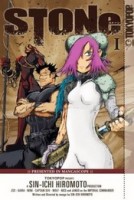 Stone, Volumes 1-2 by Sin-ichi Hiromoto. In 2004, the editor of the English edition of Hiromoto’s short manga series Stone called it a “tribute to all of the fantastic sci-fi/action/fantasy films of the past thrity-odd years.” That seems to be a fairly accurate description of Stone. Hiromoto borrows and remixes elements from many films and franchises along with his own creations to devise something entirely his own. I was frequently reminded of Waterworld and to some extent Dune, and I definitely caught nods to Hellraiser and Star Wars. I get the feeling that there were references that I completely missed, too. Stone is a quickly paced manga with plenty of action set in a post-apocalyptic world in which the planet has been covered in a literal sea of sand. My favorite parts of Stone are the nightmarish sand creatures that Hiromoto has designed. Zizi, a fiesty young woman and the series’ lead, is also pretty great. I did prefer the series’ beginning over its end. As the manga becomes increasingly chaotic as the story progresses. The artwork remains visually interesting and engaging, but the plot makes less and less sense as it goes along.
Stone, Volumes 1-2 by Sin-ichi Hiromoto. In 2004, the editor of the English edition of Hiromoto’s short manga series Stone called it a “tribute to all of the fantastic sci-fi/action/fantasy films of the past thrity-odd years.” That seems to be a fairly accurate description of Stone. Hiromoto borrows and remixes elements from many films and franchises along with his own creations to devise something entirely his own. I was frequently reminded of Waterworld and to some extent Dune, and I definitely caught nods to Hellraiser and Star Wars. I get the feeling that there were references that I completely missed, too. Stone is a quickly paced manga with plenty of action set in a post-apocalyptic world in which the planet has been covered in a literal sea of sand. My favorite parts of Stone are the nightmarish sand creatures that Hiromoto has designed. Zizi, a fiesty young woman and the series’ lead, is also pretty great. I did prefer the series’ beginning over its end. As the manga becomes increasingly chaotic as the story progresses. The artwork remains visually interesting and engaging, but the plot makes less and less sense as it goes along.
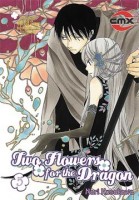 Two Flowers for the Dragon, Volumes 5-6 by Nari Kusakawa. I have now reached the point in this series where I must lament the fact that the final volume wasn’t able to be released in English before CMX folded. These two volumes form the climax of Two Flowers for the Dragon and include some extraordinarily significant plot developments and betrayals. The direction the story has taken was definitely foreshadowed, but that doesn’t make it any less heart-wrenching to see play out. I thought it was all very well done. One of the things that I like the best about Two Flowers for the Dragon is how well-developed and complicated the main characters are. They all have their strengths and their weaknesses, flaws as well as redeeming qualities. The supporting cast is likewise well-rounded, though at this point the series’ true villain unfortunately seems to be less so. The characters and their interactions are a highlight of Two Flowers for the Dragon, but I’m really enjoying the story as well. I like the mix of action, fantasy, romance, and intrigue. So much so, that I’m tracking down a copy of the last volume in Japanese. I want to know what happens!
Two Flowers for the Dragon, Volumes 5-6 by Nari Kusakawa. I have now reached the point in this series where I must lament the fact that the final volume wasn’t able to be released in English before CMX folded. These two volumes form the climax of Two Flowers for the Dragon and include some extraordinarily significant plot developments and betrayals. The direction the story has taken was definitely foreshadowed, but that doesn’t make it any less heart-wrenching to see play out. I thought it was all very well done. One of the things that I like the best about Two Flowers for the Dragon is how well-developed and complicated the main characters are. They all have their strengths and their weaknesses, flaws as well as redeeming qualities. The supporting cast is likewise well-rounded, though at this point the series’ true villain unfortunately seems to be less so. The characters and their interactions are a highlight of Two Flowers for the Dragon, but I’m really enjoying the story as well. I like the mix of action, fantasy, romance, and intrigue. So much so, that I’m tracking down a copy of the last volume in Japanese. I want to know what happens!
